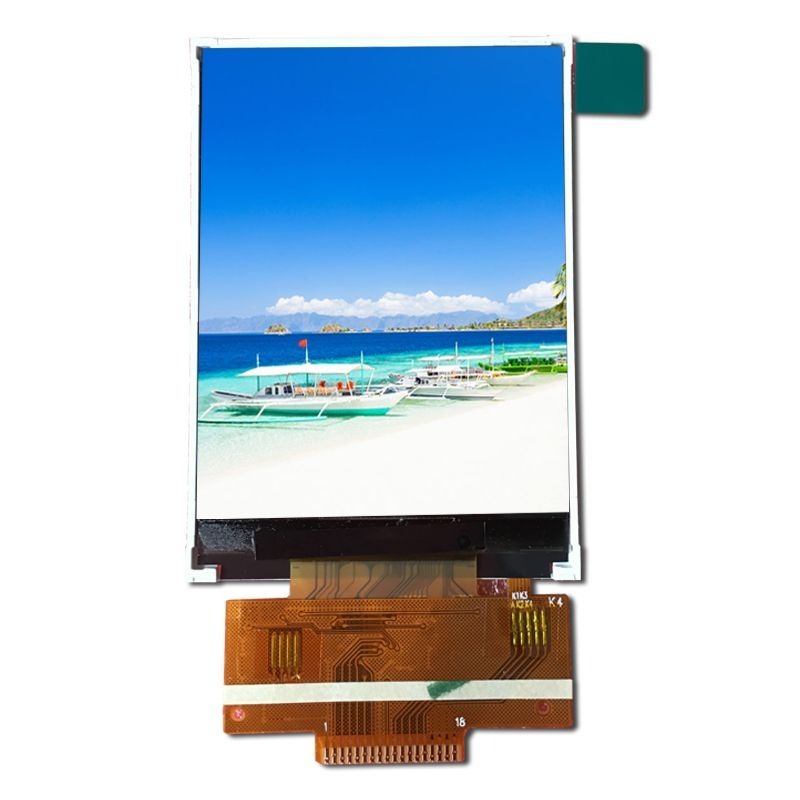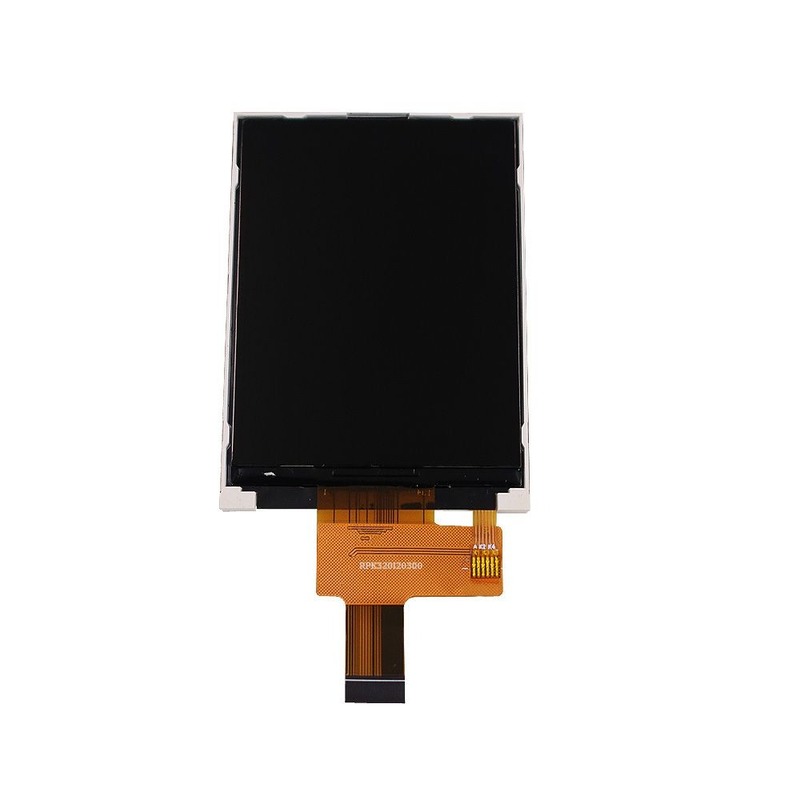What is a QVGA Screen?
A QVGA screen is defined by its resolution of 320 x 240 pixels. In essence, this resolution marks it as a quarter of the VGA resolution (Video Graphics Array), which is 640 x 480 pixels. While VGA was once the standard for computer monitors, QVGA has found its niche in simpler devices where high-definition visuals are not essential.
The pixel configuration of QVGA means it has a total of 76,800 pixels. This relatively low pixel count offers adequate quality for basic functions, but compared to newer display technologies, it exhibits limitations in detail and clarity. Understanding what a screen is offers insight into its practical use cases and assists both consumers and manufacturers in making informed decisions.

QVGA Resolution: An In-Depth Look
Technical Specifications
The term QVGA resolution pertains specifically to the number of pixels horizontally and vertically. To clarify, a screen has:
– Horizontal Pixels: 320
– Vertical Pixels: 240
– Total Pixel Count: 76,800 pixels
These specifications result in a display size that is best suited for applications that do not require high-resolution capabilities.
Pixel Density and Quality
Pixel density, measured in pixels per inch (PPI), plays a critical role in determining display quality. For QVGA screens, the pixel density varies based on the screen size. For example, on a small screen, the pixel density may be sufficiently high to avoid visible pixelation, but this diminishes when the screen size increases.
Comparing QVGA with Other Resolutions
When comparing QVGA to other resolutions, the following points provide clarity:
1. VGA (640 x 480): VGA provides more detail due to its higher pixel count.
2. SVGA (800 x 600): Offers even more clarity and is preferred for slightly more complex images.
3. HD (1280 x 720): Provides sharp, vibrant images ideal for media consumption.
Thus, while QVGA screens offer basic functionality, their limitations in resolution are evident when placed alongside modern standards.

Benefits of Using QVGA Screens
QVGA screens may seem outdated, yet they have specific benefits that make them advantageous in particular contexts:
1. Cost-Effectiveness
QVGA screens are considerably cheaper to produce than their higher-resolution counterparts. This affordability makes them an ideal choice for budget-conscious manufacturers creating low-cost devices. For consumers, this translates into lower prices on smartphones, MP3 players, and wearables.
2. Lower Power Consumption
The technology behind QVGA screens typically consumes less power compared to modern displays. Devices with QVGA screens tend to enjoy longer battery life. This characteristic is particularly beneficial in portable electronics like basic mobile phones and handheld gaming devices, where extended usage without frequent recharging is a priority.
3. Simplicity in Design
One of the strongest attributes of QVGA screens is their simplicity. Many users prefer uncomplicated interfaces, particularly in basic consumer electronics. This simplicity makes it easier for individuals, especially those who are not tech-savvy, to operate devices with QVGA displays.
4. Adequate for Basic Uses
For users primarily engaged in simple tasks such as texting, calling, or basic web browsing, QVGA provides a sufficient experience. Although it may not be suitable for graphics-intensive tasks like gaming or watching high-definition videos, it handles standard functions effectively.
5. Lightweight and Compact
Devices utilizing screens can be relatively small and lightweight, which adds to their portability. Manufacturers can design compact devices with functional, user-friendly interfaces without the bulk that larger displays might require.
In summary, the benefits of screens render them suitable for many specialized applications, particularly in budget devices and embedded systems.

Applications of QVGA Screens
Many devices still utilize QVGA screens due to their specific advantages. The following applications highlight where screens are most commonly found:
1. Feature Phones
Many budget mobile phones equipped primarily for essential communication features incorporate screens. These devices focus on calls and SMS functionality rather than advanced apps or gaming, making sufficient for their needs.
2. GPS Devices
Low-cost GPS navigators often utilize QVGA screens to display maps and relevant navigation instructions. The clarity of the display meets the requirements for directional prompts and basic information, facilitating navigation without the need for high-definition visuals.
3. Embedded Systems
QVGA screens are common in embedded systems, such as home appliances, automotive displays, and industrial control panels. These applications require simple user interfaces for monitoring and adjustment, showcasing data clearly without overwhelming graphics.
4. Wearable Devices
Some fitness trackers and smart accessories employ QVGA screens due to their compact size and the need for straightforward displays. These devices focus on essential metrics such as time, heart rate, or step count, where high-resolution displays are unnecessary.
5. Low-End Tablets
Certain inexpensive tablets also feature displays. These devices cater to individuals seeking basic web browsing or e-reading experiences, allowing them to access information without the advanced capabilities of higher-resolution screens.
By understanding the applications of QVGA screens, users can better identify the effectiveness of devices that employ them.

QVGA vs. Other Resolutions
Detailed Comparison of QVGA and VGA
QVGA (320 x 240):
– Low resolution mainly for basic tasks.
– Suitable for feature phones and simple applications.
VGA (640 x 480):
– Provides clearer images and more detail.
– Common in older computer monitors and simple video applications.
Comparing QVGA with SVGA and XGA
SVGA (800 x 600):
– Higher resolution results in clearer images.
– Often used in projectors and standard monitors.
XGA (1024 x 768):
– Provides even better detail ideal for presentations.
– Common in educational settings and home offices.
The Shift to High-Definition Displays
With the rise of HD displays (1280 x 720 and beyond), users increasingly seek clearer images and vibrant colors. For entertainment mediums like streaming, gaming, and photography, HD is necessary for an enjoyable experience. Thus, QVGA screens are primarily reserved for lower-end markets or specific applications where high resolution isn’t a requirement.
The comparison between QVGA and other resolutions highlights both the strengths and limitations of technology in a rapidly advancing industry.
QVGA Screen Specifications
Examining the specifications of QVGA screens can provide useful insights into their performance potential:
Pixel Pitch
Pixel pitch indicates the distance between pixel centers. A smaller pixel pitch enhances image sharpness. QVGA screens feature a moderate pixel pitch appropriate for their resolution.
Viewing Angles
The effectiveness of viewing angles impacts how images are perceived from various positions. Typical QVGA screens demonstrate limited viewing angles due to their LCD technology. Users might notice color distortion and fading when viewing from extreme angles.
Refresh Rate
The refresh rate of screens typically sits around 60 Hz. This refresh rate is adequate for standard video playback but may lag in scenarios requiring rapid refresh, such as gaming or high-speed video.
Color Reproduction
Color reproduction capacity in screens depends on the specific technology used. While traditional models may struggle with true-to-life colors, advancements in display technologies can offer improved color accuracy.
By analyzing the specifications of screens, both users and manufacturers can make better-informed decisions when selecting devices with these displays.

Future of QVGA Screens
The landscape of display technology continues to shift, and there are several considerations for the future of QVGA screens.
1. Technological Advancements
As manufacturers gravitate toward higher-definition displays, QVGA screens face challenges in maintaining relevance. However, they may continue to serve specific markets where low resolution suffices.
2. Emerging Market Trends
While interest in high-resolution devices grows, QVGA screens may find a niche in developing regions or among budget-conscious consumers. The focus on affordability could sustain demand over time.
3. Integration into IoT Devices
The Internet of Things (IoT) introduces potential applications for screens in smart home devices, wearables, and other low-power applications. As more consumers adopt connected devices, QVGA screens may find renewed purpose.
4. Sustainability Considerations
With a growing emphasis on sustainability, simpler technologies like displays could become appealing again. Devices that consume less power and offer sufficient functionality align with eco-friendly initiatives, reinforcing the relevance of QVGA technology.
The future of screens may present increases in specific applications as the market recognizes their strengths and cost-effectiveness amid a sea of high-definition options.
Conclusion
In conclusion, the QVGA screen remains a relevant technology in certain contexts, despite the prevalence of high-resolution displays. Understanding its specifications, benefits, and applications provides valuable insights for consumers, manufacturers, and tech enthusiasts.
While screens might not cater to the multimedia needs of high-definition content, they offer simplicity, cost-effectiveness, and sufficient functions for basic tasks. They continue to serve as viable options in feature phones, GPS devices, and embedded systems.
Evaluating when to use screens will assist in making informed decisions based on your needs and preferences. As the tech landscape evolves, screens may not dominate the market but will continue to have their place in the world of technology.










